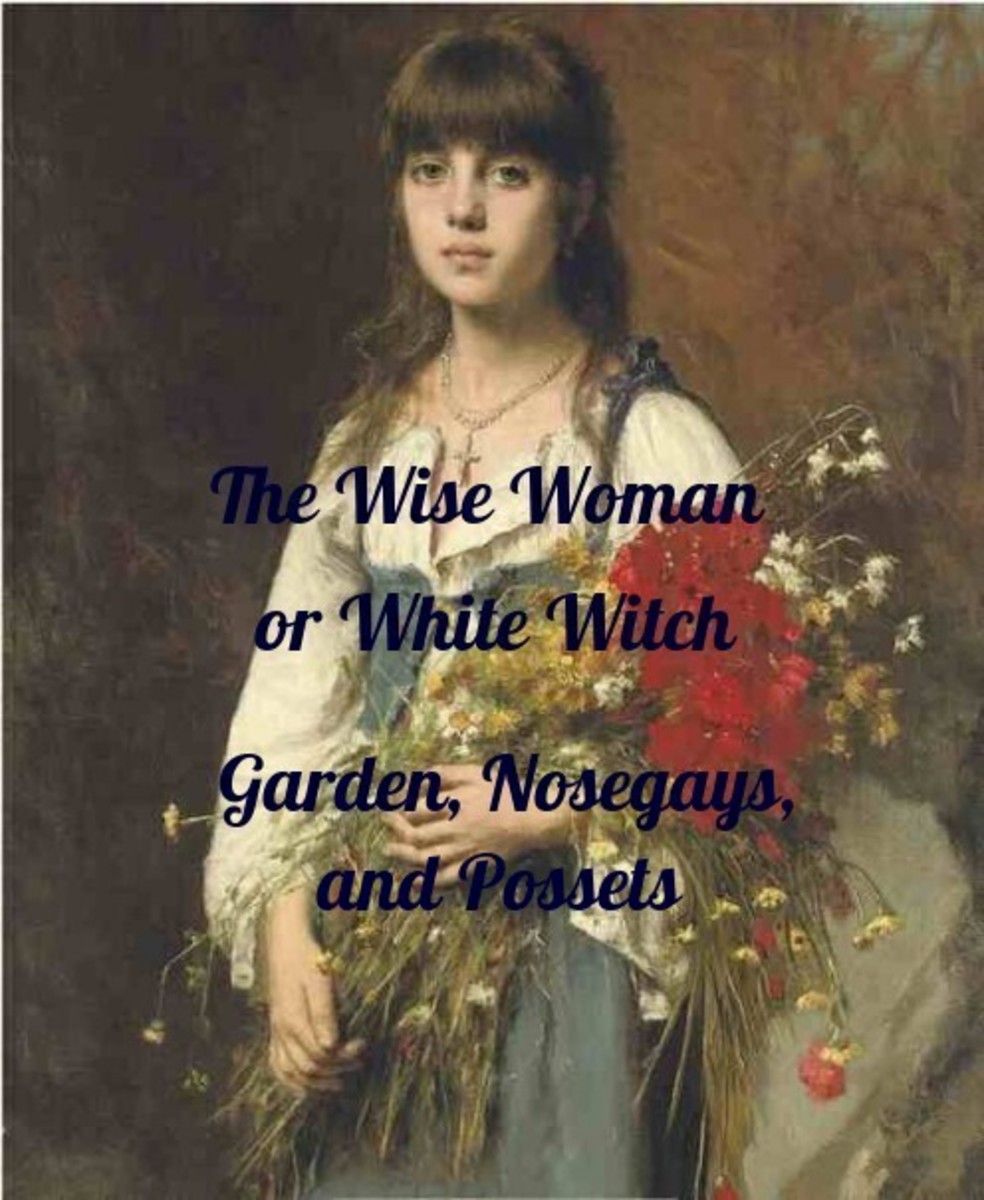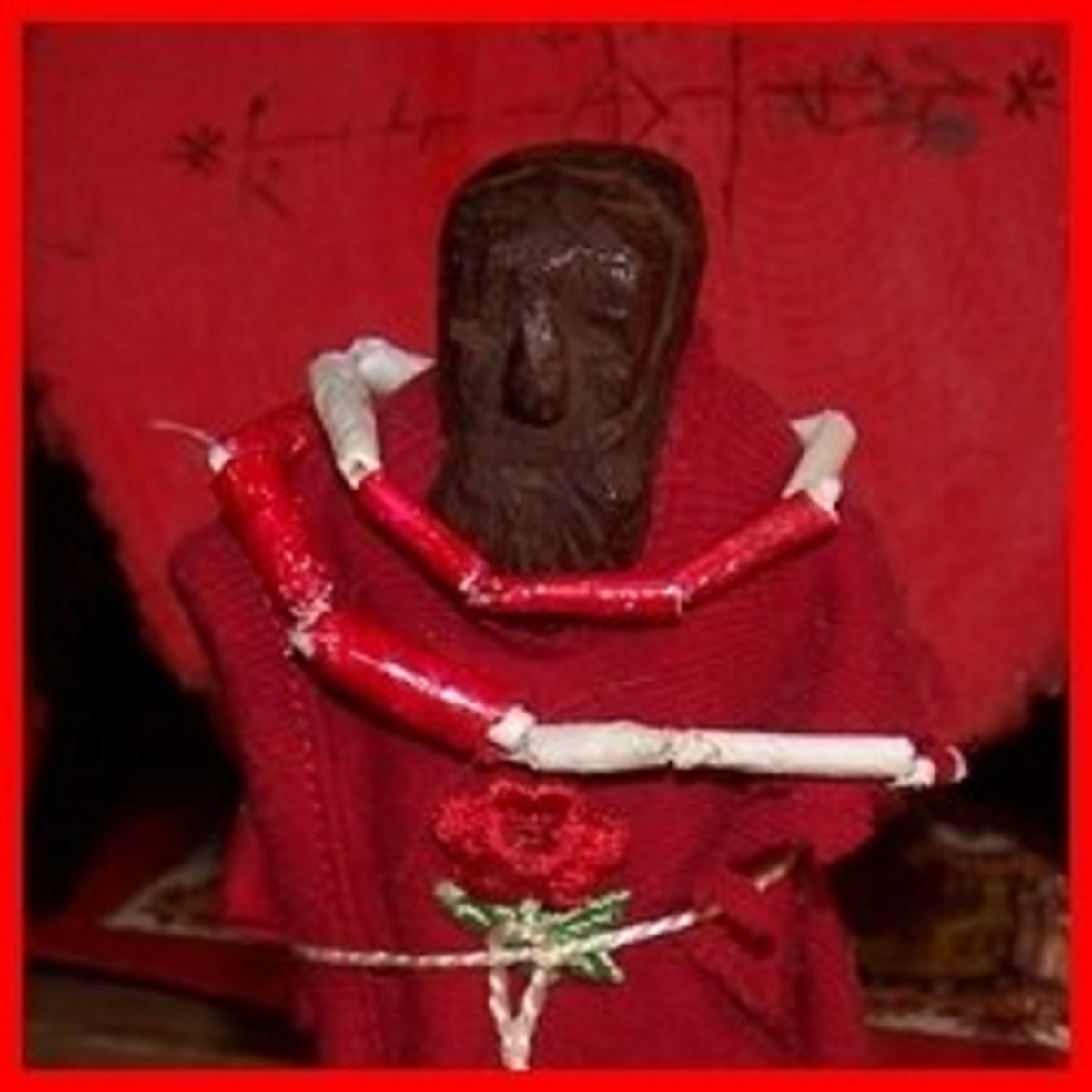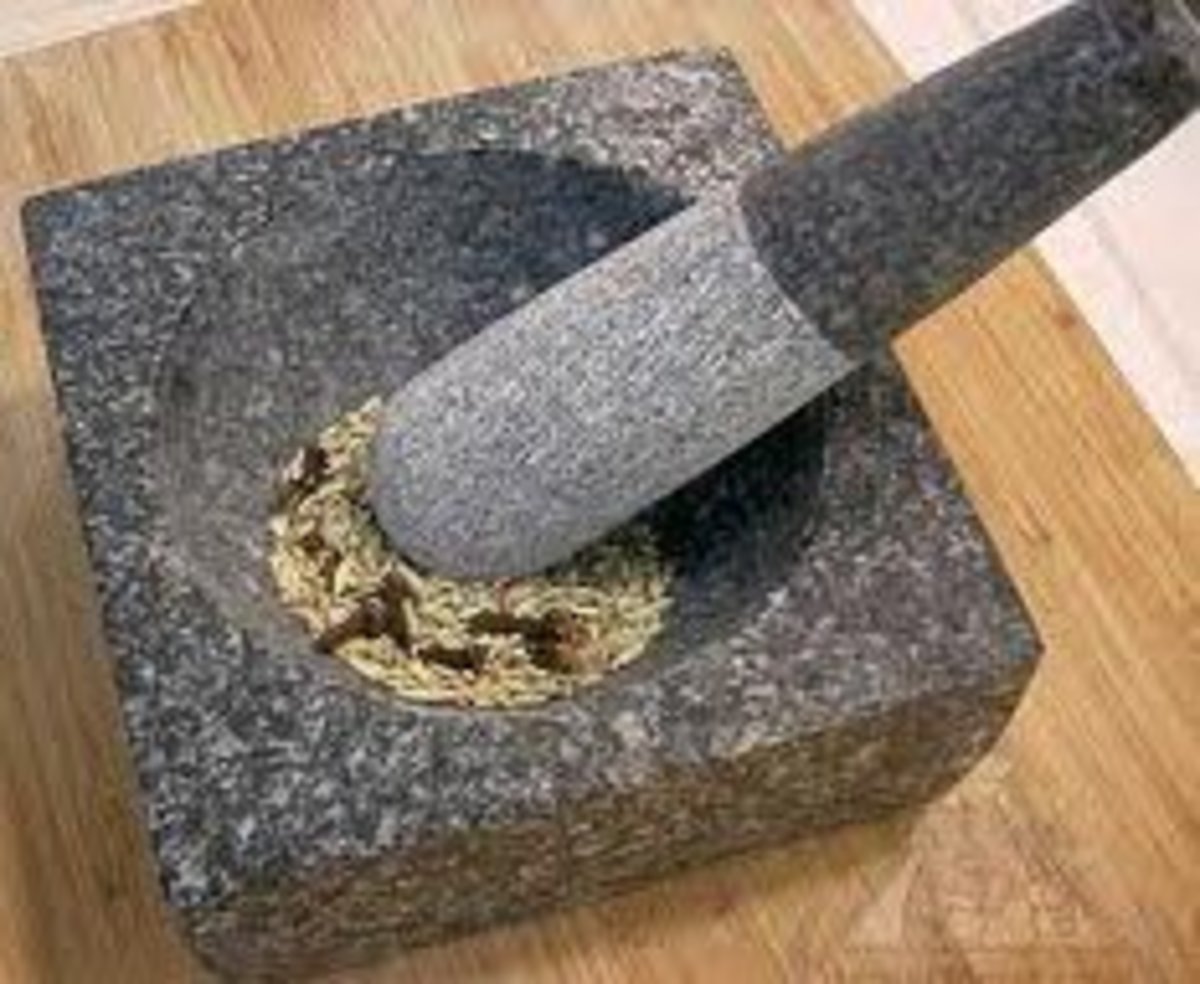Other Magickal Tools
Offering Dish
The offering dish (or libation dish) can be a plate, bowl, or cup and is usually positioned in the center of the altar, in order to hold the offerings for your Gods and Goddesses. This dish is a representation of the element of Earth.
We see offerings as a way in which we can show respect to the Divine with a gift of thanks. These gifts should be given to your Deities in the same fashion that you would for an honored guest. These gifts can be flowers, herbs, food, water, fruit, jewels, shells, scented oils, or anything that is considered cherished by your God and/or Goddess. These offerings may also be a food or item of the season if celebrating a Sabbat or Esbat (such as a small pumpkin or squash at Samhain or violets during your Full Moon Esbat in March). When your ritual is complete, it is conventional to return your offering to the Divine, to the Earth. You can pour or place the offering outside, or you may choose to bury the offering.
This dish is also often used to strengthen and direct the energy of any item that is placed upon it during a ritual or magickal working. Such as placing your athame on the dish to banish negative or harmful energy or spells.
When exploring various rituals online, you may notice that near or at the end of the ritual, a Cakes and Wine Ceremony is held. Cakes and Wine are, simply put, blessed food and drink that is, customarily, partaken of after a ritual is performed. These can be as simple as a piece of bread and some water, or as elaborate as a fancy cookie or bread and some wine or champaign. A portion of each is then allocated, as a libation to Deity and to honor the God and Goddess that were a part of your ritual or magickal working. This is seen as a way to thank them for the love and support that they contributed to you during your ritual.
My New E-Book is Available
I have spent some time lately creating an e-book for my fellow Wiccans, Witch's, and Pagans.
It has all of the common tools that we use along with history, lore, where to buy, how to make (if possible), and correspondences.
I have created this because I know how convenient it is to have all of the information available and easily accessible. I even find myself using this all the time simply for the correspondences.
Bell
The bell is a feminine tool, and is affiliated with the element of Air. The sound of the bell is indicative of the inspired power, while the structure of the bell is a symbol of the female energy and blessed vault.
Bells are used for a variety of functions in rituals and magickal workings. They can be employed to invoke the Goddess during ritual, to guard against evil spirits, to stall storms, invoke positive energies, clear energy from a space, for invocation, at the start of a ritual in order to banish negative energies and influences, at each of the four quarters in order to call forth such spirits as the Watchers or Guardians and Elemental's, to open and close a sacred circle, and to indicate a different section of a ritual or Sabbat.
A bell may also be placed in a cabinet or hung on your door(s) to safeguard your home or place of business. When a bell is hung from a cord it is symbolic of the human soul between worlds. It is considered by many that when you ring the bell not only are you guiding the Divine’s awareness to you, but you are also guiding your consciousness to the Divine.
Sound is nothing more than a vibration. Vibrations are considerably important in magick, because it helps to acquire the right atmosphere. The vibrations that are given off when a bell is rung, can have a powerful impact, depending upon its loudness, tone, and the material that the bell is made from. A bell with an enchanting tone will call radiant, loving, and healing energies to you and your ritual. I think that sweet sounding bells resemble the voice of the Goddess.
Some people feel drawn to use a bell during rituals, while others simply choose not to. If you do decide to use a bell, you should choose your bell cautiously, so that the sound is delighting to you. The bell that you select should be soothing and mellow rather than harsh and discordant.
Bowls of Salt and Water
The bowl of water represents the element of Water, and is feminine in nature. Water from rain, a river, lake, or stream is favored. However, if this isn't convenient, bottled or tap water will work just as well. The water should always be consecrated and blessed before using. Depending on how you have your altar set up, the bowl of water is commonly placed on either the left side of the altar, or on the west of the altar.Water is used in cleansing tools for rituals, the home, and sacred space.
The bowl of salt represents the element of Earth and is feminine in nature. Sea salt is often preferred, but any salt will work. The salt should be consecrated and blessed before it is used in a ritual or magickal working. The bowl of salt is customarily placed on the north of the altar or on the right side of the altar. While salt is feminine in nature, it is often placed on the right side of the altar to keep things in balance. Salt is often used to cleanse tools of negativity and to mark the boundary of the circle. Placing objects in salt during a Full Moon not only cleanses them, but also charges (or recharges, as the case may be) them with the powers and energies of the Moon and the Goddess herself.
During ritual it is quite common to combine a small amount of the salt with the water. This is done in order to purify and consecrate the circle with both the Earth and Water elements. Salt water represents the energies of the Earth and Water and signifies the ocean womb which gave life to all and holds great power. In the course ofsome rituals, the salt is added to the water and then consumed, in order to symbolize the blending of the Goddess and her elements within our physical bodies.
Statues
The God and Goddess statues are not essential, but are usually a beloved part of one's altar anyway. The statues that we use are depictions of a perspective of the Divine.Many people identify to a particular God and Goddess, and so enjoy having a representation of them upon their altar. Your God and Goddess statues can serve as more than just a reminder of Deity, they can also hold the very resonance of the Divine within them. When this occurs, your altar becomes a blessed place where the Divine can exist.
Goddess statues are typically situated on the left side of the altar, while the God statue is located on the right side of the altar.
The God and Goddess statues can be replaced or substituted for candles, pictures, or symbols of your Deities. Statues can also be items or animals that are sacred or that the God or Goddess is often portrayed as. Such as The Egyptian Goddess Bastet (or Bast) was frequently pictured as a cat or a person with a cat head. You could use a statue of a regal cat to depict the Goddess Bastet.
If you do not have a specific deity or pantheon, you can instead, find a universal figure of the God and Goddess, such as a Sun Statue for the God and a Moon Statue for the Goddess.
Clothing and Jewelry
While clothing and jewelry are not actually regarded as a tool, I decided that I would mention them briefly, at any rate.
Many people do have specific clothing and jewelry set aside for ritual and magickal workings only, while other people feel that robes are excessive and unnatural and choose to either work in regular clothes or skyclad.
Clothing and jewelry are used to assist us in getting the mind preparedfor ritual or magickal practice. Many people like to find clothing and jewelry that are similar to the clothing and jewelry worn by the Gods and Goddesses of their pantheon (such as Greek, Roman, Celtic, Egyptian, etc...) because they feel that this shows love and honor to these Deities.These items also aid in separating the magickal world from the routines of everyday life. Many people value the clothing and jewelry because it adds more formality to a ritual. Wearing jewelry with stones and/or magickal symbols are beneficial in magickal practice and can contribute magickal energies to the ritual or magickal working.
Robes come in various distinctive styles and colors. You can decide based upon the magickal work that you will be performing, the different Sabbat or Esbat that you are celebrating, the elemental color that you are aligned with, or as specified by your tradition.The color of your robe within a coven might designate your stature within the coven.
When choosing jewelry or clothing, it should not only fit you and your beliefs, but also your tradition and coven or circle. You should also make sure that it isn't going to get in the way of your magickal workings, and great care must be taken when around fires with a long and billowing robe.
Clothing & Jewelry
Lighter and Matches
You will also need a lighter or matches. Whether you will be working with a lighter or matches, they will still need to be cleansed and consecrated and dedicated to magickal use before using. The lighter or matches are masculine in nature and symbolizes the element of Fire. These will either be on the right side of the altar, or in the south of the altar.
Many people use matches because they feel that they have a more natural feel to them than the lighters do. If you do decide to use matches, it is convenient to find a small fire-proof container that can be used to place the matches in until after the ritual. They can then be discarded when the ritual or magickal working is finished. I've found that a small stainless steel bowl works perfectly. These can generally be found in the cooking or kitchen isles of most stores.
The lighter or matches are used to light incense, candles, and paper, or other items that are burned during spell work.





